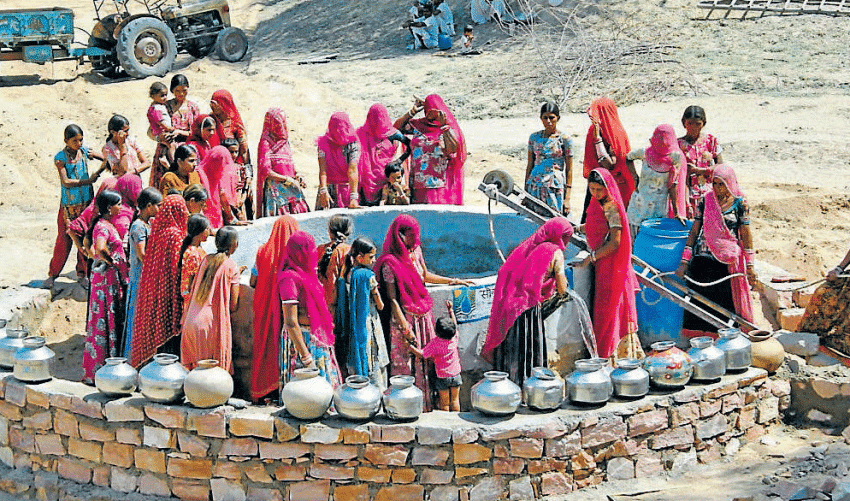NEW DELHI – New groundwater contamination has been found in northwest India, involving a high level of Uranium that can cause high risks of chronic kidney diseases.
The new addition to the water quality problems occurred in recently published research that shows the large-scale presence of uranium in several parts of India, particularly Gujrat and Rajasthan, the areas border with Pakistan’s Sindh province.
The level of the chemical element found in the groundwater resources is higher than 30 µg/L, the limit suggested by the World Health Organisation (WHO).
The water problems are not new for India as its groundwater also suffers from multiple issues such as arsenic and fluoride contamination that pose human health risks. The area mostly affected from these issues are West Bengal, Uttar Pradesh, Bihar and Assam.
ACS Publications which conducted the research says, “We present compiled data on groundwater uranium from 16 Indian states and new data from 324 wells in the states of Rajasthan and Gujarat that show a high prevalence of uranium concentrations above the World Health Organization provisional guideline value of 30 μg/L across India”.
The results showed that 75 of the 226 wells (28.7%) tested in Rajasthan and five of the 98 wells (5.1%) tested in Gujarat had more uranium than the WHO’s described limit. The levels of the chemical element in some wells of Rajasthan were close to 300 µg/L.
In findings, It says: “Using geochemical and uranium isotope data, we suggest factors that may drive high uranium concentrations in groundwater, including uranium content in aquifer rocks, oxidation state, and groundwater chemistry that promotes the formation of soluble uranyl carbonate complexes. While the primary source of uranium is geogenic, anthropogenic factors such as groundwater table decline and nitrate pollution may further enhance uranium mobilization”.
In India, the limits for arsenic and other toxic metals have been defined but there is no limit maintained for uranium, a heavy metal that can lead to severe kidney problems due to its chemical toxicity. However, the Atomic Energy Regulatory Board of India has set a radiology-based limit of 60 µg/L for uranium.
Avner Vengosh, a geochemist at Duke University, North Carolina, and an author of the new study related to tracking uranium, talking to The Wire said, “We did not know in the beginning of the study about the high uranium and the results indeed surprised us, especially since the uranium problem is all over India”.
“The source of uranium is naturally occurring, but human activities like over pumping enhance the uranium problem,” said Vengosh.
The findings of the new study suggest the need for revision of the current water quality monitoring program in India, evaluation of human health risks in areas of high uranium prevalence, development of adequate remediation technologies, and, above all, implementation of preventive management practices to address this problem.
Alarm Bells Ringing For Pakistan
The aggravated situation of groundwater resources in the neighbouring country also put Pakistan, where people in major parts have no access to clean drinking water, on risk.
A one-man inquiry commission, which was appointed by the Supreme Court to check the water situation in Sindh, recently submitted a report, regretting that quality of drinking water in Sindh had gone from bad to worse.
The commission’s report explained that 78.1pc of the water samples were found unsafe for drinking in 13 districts of Sindh, including all six districts of Karachi. The condition of water filtration plants has also not improved.
A Pakistani Journalished has urged the government to examine groundwater in Sindh which is close to the northwest India.
https://twitter.com/HamidMirPAK/status/1011460687770550275?s=19














